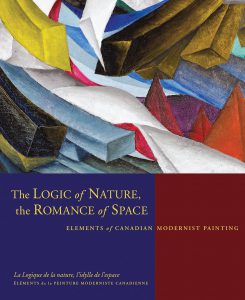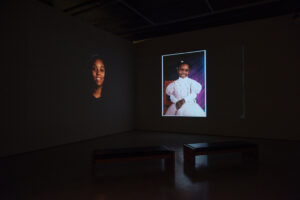It’s alive! explores Bertram Brooker’s search for a visual language capabale of animating viewers by appealing to their physical desires. Representations of Brooker (1888-1955) as the “pioneer” of Canadian abstraction have forced an artificial separation of his careers in advertising and the visual arts (Brooker wrote several influential texts on marketing and worked for several Toronto agencies, eventually serving as vice-president of MacLaren). In fact, the physiological aesthetics elaborated by Brooker in his texts are a rich source of information about the philosophical sources of his art. In particular, his writings reveal a familiarity with the biophilosophy of Henri Bergson. Inspired by Bergson’s notion that the individual is a “locus of action.” Brooker’s professional writings and the fine art practice develop a methodology for “enlivening” the image by simulationg energy, movement and growth. Advertising, according to Brooker, “must arouse and produce action.”
Brooker’s visualizations of Bergson’s biophilosophy also evokes analogies with the formal features of early cinema. During 1912-13, Brooker authored more than half a dozen scenarios for the Vitagraph Company of America, the largest American movie studio in its day. It’s alive! juxtaposes the recently-unearthed The Adventure of the Thumb Print (1912), a film based on a scenario by Brooker, with an excerpt of La Mancha de Sangre (1937) by Mexican filmmaker Adolfo Best-Maugard, whose manual A Method for Creative Design (1926) provided a framework for Brooker’s adaptation of Bergson’s physiological aesthetics to pragmatic marketing concerns. Perhaps motivated by his experience in film and familiarity with Best-Maugard’s kinaesthetic theory of vision, Brooker’s paintings, drawings and graphic designs employ cinematic cues to address a mobile spectator.
Brooker’s images of plants and other living things are more than imitations of life: his “principle of drawing analogies between dead and living things” visualizes the vitalist concept of “direct communication” as a channel for mass communication. It’s alive! uncovers connections between Brooker’s art and the vitalist aesthetics promoted by artists who straddled the traditional divide between fine art and mass media, including Fortunato Depero, Wyndham Lewis and Paul Nash. The international sources of Brooker’s vitalist modernism challenge conventional characterizations of the mid-20th century Toronto art scene as a cloistered community of mystics, proposing an alternative vision of the city as the global marketplace of ideas, that incubated the utopian communications theories of Marshall Mcluhan.






